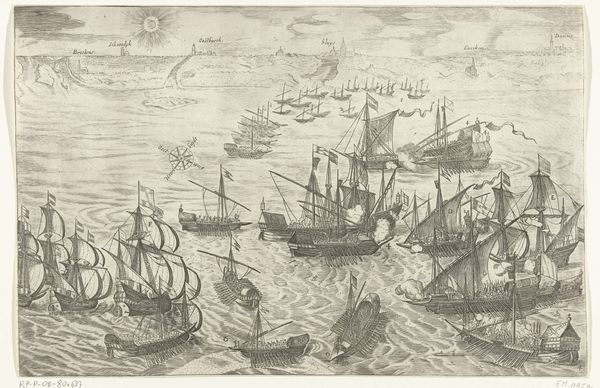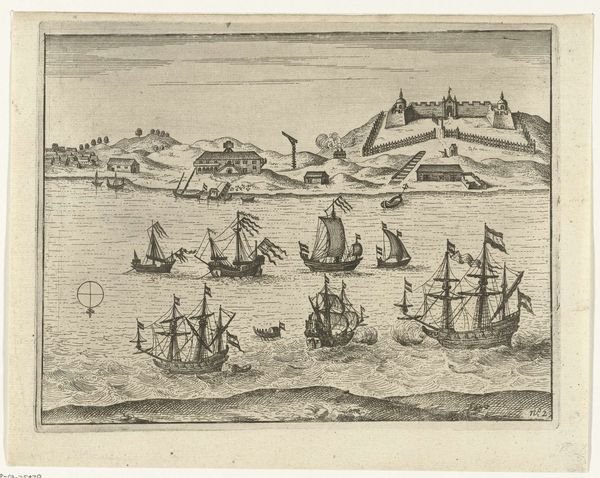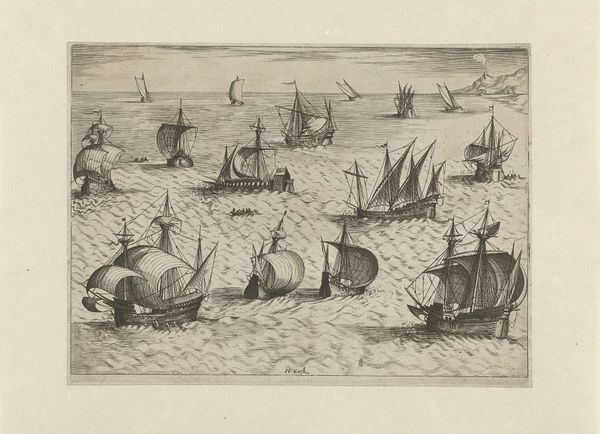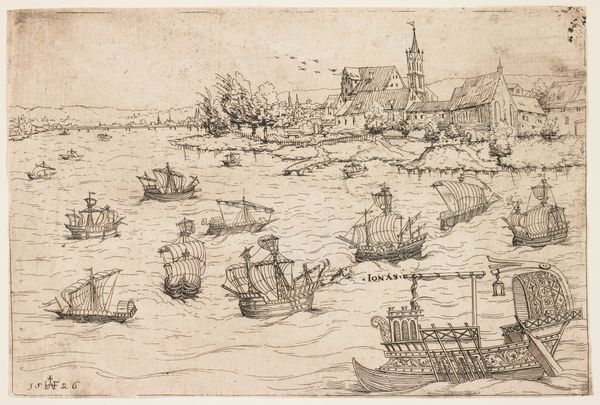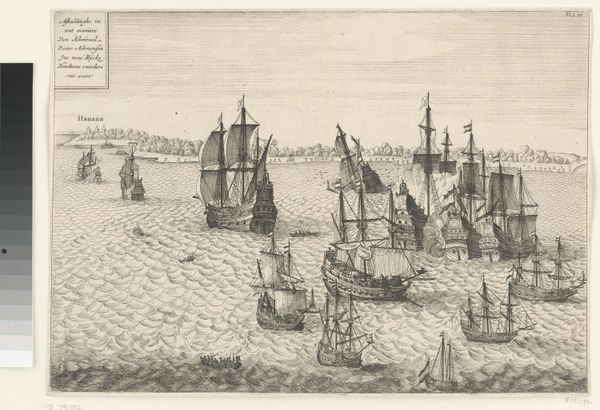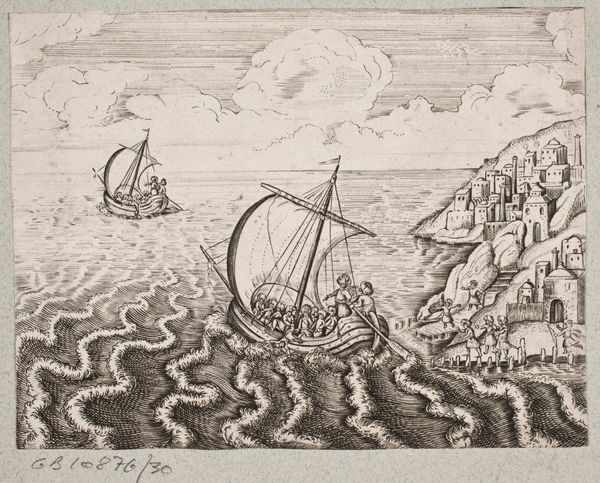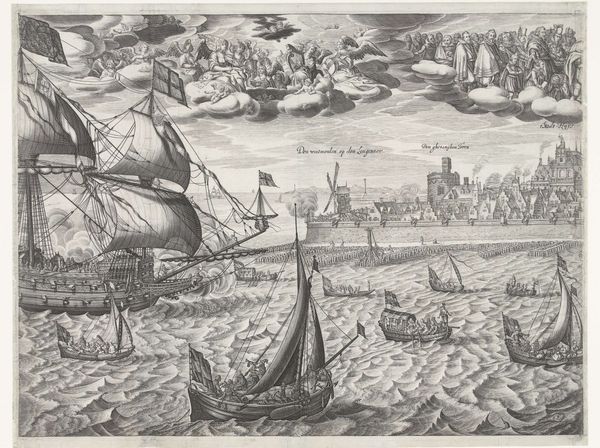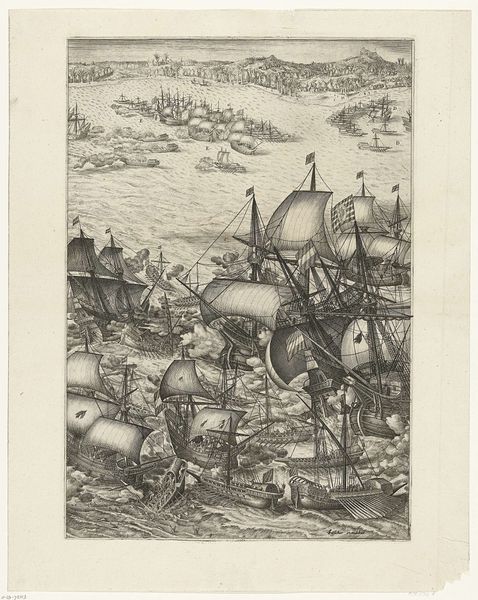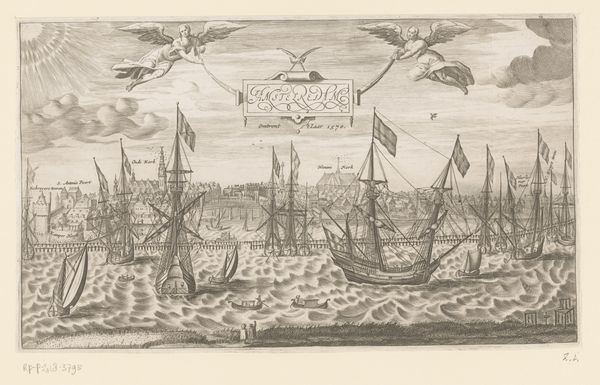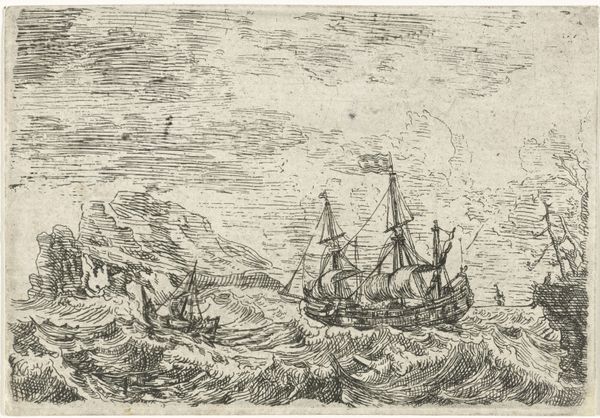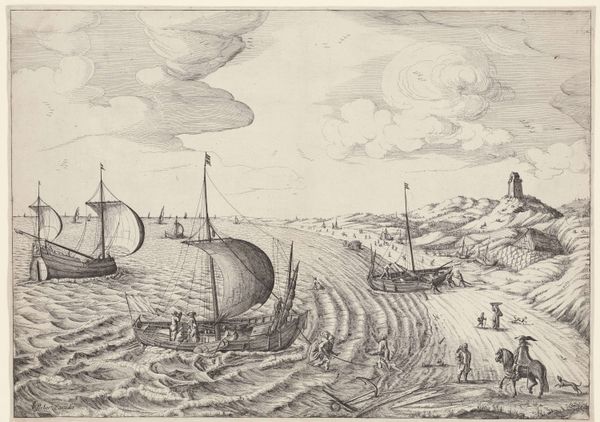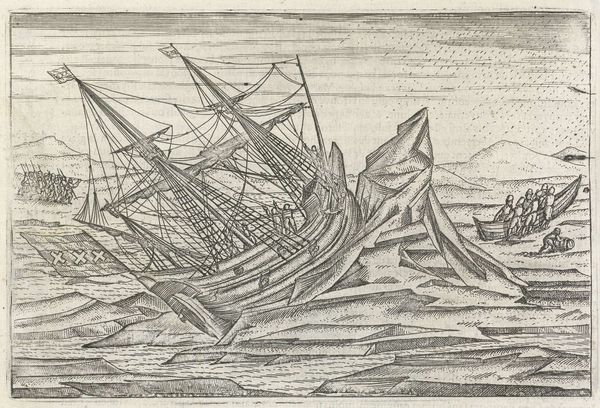
Zeeslag waarbij de acht galeien van Spinola worden verslagen door de vloot van Joos de Moor, 1603 1603 - 1615
0:00
0:00
print, engraving
#
baroque
# print
#
landscape
#
figuration
#
ink line art
#
line
#
cityscape
#
history-painting
#
engraving
#
realism
Dimensions: height 146 mm, width 246 mm
Copyright: Rijks Museum: Open Domain
Editor: We’re looking at “Zeeslag waarbij de acht galeien van Spinola worden verslagen door de vloot van Joos de Moor, 1603,” made between 1603 and 1615 by an anonymous artist. It’s an engraving, and my first impression is how busy it is! There are ships everywhere. What story do you think this image is telling? Curator: This print captures a key moment of Dutch naval triumph during the Eighty Years' War, a conflict deeply tied to the formation of Dutch national identity and its assertion against Spanish rule. Engravings like these served as potent propaganda tools, shaping public opinion and bolstering morale. Editor: Propaganda, really? Curator: Absolutely. Think about it: the composition emphasizes the scale of the battle and the number of ships, making it look very dynamic. The victorious Dutch fleet is shown prominently, with the defeated Spanish ships scattered or sinking. This isn't just about accurately recording history. It’s carefully crafting a narrative of Dutch power and righteous victory. Who was this artwork meant to persuade, and about what? Editor: So, by depicting this victory, the print is reinforcing the idea of Dutch naval superiority, right? Meant to inspire confidence in the Dutch cause? Curator: Precisely! And to consolidate popular support for the ongoing struggle for independence. This was a culture grappling with its identity on the world stage, using art to cement a national story. Editor: That makes so much sense. I had only considered the ships, but I now see the broader political picture the artist was painting. Thank you! Curator: Indeed. It is a good reminder that what we see on the surface always goes deeper in the context of history and political meaning.
Comments
No comments
Be the first to comment and join the conversation on the ultimate creative platform.
